Accepted Scientific Name: Echinocereus engelmannii (Parry ex Engelm.) Lem.
Cactées 56. 1868

Echinocereus engelmannii var. armatus Photo by: Valentino Vallicelli
Origin and Habitat: Native to California in the Argus mountains, Inyo county and aest of Victoville, san Bernardino County but also found outside of California, but is confined to western North America.
Habitat: Grows on gravel, sand and rocky hills in Creosote Bush Scrub, Pinyon-Juniper Woodland, Joshua Tree Woodland.
Synonyms:
See all synonyms of Echinocereus engelmannii
Common Names include:
ENGLISH: Saint's Cactus, Strawberry Hedgehog Cactus, Engelmann's Hedgehog Cactus
Description: Echinocereus engelmanni var armatus is the most formidably spiny extreme of the species.
Habit: It is a clumping columnar cactus, 6-25-branched, ultimately forming somewhat open clumps of stems.
Stems: Suberect or erect light green, cylindrical or somewhat tapering distally, usually 15-20 cm tall, and about 5 cm in diameter, branching freely from the base;
Ribs: 11 to 14 low obtuse, tubercles indistinct, crests slightly undulate.
Areoles: 6-15 mm apart, wool present in first year only.
Spines: 8-20 per areole up to 13 cm long; divergent-porrect, stout, and rigid, straight or curving and somewhat twisted, brownish-pink or (usually) dull golden-yellow.
Radial spines: Lighter whitish to creamy coloured 8-20 mm long long, spreading.
Flowers: From purple to lavender. The flowers are up to 7 cm in diameter, 5-8 cm long . Flower tube hairy.
Blooming season: Spring, flowers are diurnal close at night and reopen in the morning and last for about five days.
Fruit: Red or orangish 2,5-4cm long, spherical, fleshy, pulp whitish be-coming infused with pink or red from the skin. The fruit is edible, it is said to taste like strawberry.
Subspecies, varieties, forms and cultivars of plants belonging to the Echinocereus engelmannii group
 Echinocereus engelmannii (Parry ex Engelm.) Lem.: ( var. engelmannii) ha 4 to 6 central spines whitish, golden-yellow, reddish brown to nearly black. It is a highly variable species. Distribution: Southwestern USA (California, Nevada, and Arizona) and northwestern Mexico (Baja California and Sonora).
Echinocereus engelmannii (Parry ex Engelm.) Lem.: ( var. engelmannii) ha 4 to 6 central spines whitish, golden-yellow, reddish brown to nearly black. It is a highly variable species. Distribution: Southwestern USA (California, Nevada, and Arizona) and northwestern Mexico (Baja California and Sonora). Echinocereus engelmannii var. acicularis L.D.Benson in L.D.Benson: has only 2-4 central spines and more robust habit. Distribution: California, Arizona, Baja California and Sonora.
Echinocereus engelmannii var. acicularis L.D.Benson in L.D.Benson: has only 2-4 central spines and more robust habit. Distribution: California, Arizona, Baja California and Sonora. Echinocereus engelmannii var. armatus L.D.Benson: is the most formidably spiny extreme of the species, central spines up to 13 cm long. Distribution: California and Nevada.
Echinocereus engelmannii var. armatus L.D.Benson: is the most formidably spiny extreme of the species, central spines up to 13 cm long. Distribution: California and Nevada. Echinocereus engelmannii var. chrysocentrus (Engelm. & J.M.Bigelow) Rümpler in C.F.Först.: has 5-6 very stout yellowish to brown central spines, up to 7 cm long (or more), but it is very variable. Distribution: California, Nevada, Arizona, and Utah.
Echinocereus engelmannii var. chrysocentrus (Engelm. & J.M.Bigelow) Rümpler in C.F.Först.: has 5-6 very stout yellowish to brown central spines, up to 7 cm long (or more), but it is very variable. Distribution: California, Nevada, Arizona, and Utah.- Echinocereus engelmannii var. howei L.D.Benson: Distribution: California and Nevada.
 Echinocereus engelmannii var. munzii (Parish) W.Pierce & Fosberg: is a mountain form with white spines twisting up up from small bodies, with 4 central spines (except in an occasional areole) instead of 1 and magenta flowers. Distribution: California and Baja California.
Echinocereus engelmannii var. munzii (Parish) W.Pierce & Fosberg: is a mountain form with white spines twisting up up from small bodies, with 4 central spines (except in an occasional areole) instead of 1 and magenta flowers. Distribution: California and Baja California. Echinocereus engelmannii var. purpureus L.D.Benson: is a dark-colored, short-spined morphological form that occurs interspersed throughout populations of Echinocereus engelmannii var. chrysocentrus. Distribution: Utah.
Echinocereus engelmannii var. purpureus L.D.Benson: is a dark-colored, short-spined morphological form that occurs interspersed throughout populations of Echinocereus engelmannii var. chrysocentrus. Distribution: Utah. Echinocereus engelmannii var. variegatus (Engelm. & J.M.Bigelow) Rümpler in C.F.Först.: has multicoloured dark-colored spines, typically the central spines are long red or black and contrasts nicely with the white radial spines. Distribution: Arizona and Utah.
Echinocereus engelmannii var. variegatus (Engelm. & J.M.Bigelow) Rümpler in C.F.Först.: has multicoloured dark-colored spines, typically the central spines are long red or black and contrasts nicely with the white radial spines. Distribution: Arizona and Utah.
Bibliography: Major references and further lectures:
1) Edward Anderson “The Cactus family” Timber Press, Incorporated, 2001
2) James Cullen, Sabina G. Knees, H. Suzanne Cubey "The European Garden Flora Flowering Plants: A Manual for the Identification of Plants Cultivated in Europe, Both Out-of-Doors and Under Glass" Cambridge University Press, 11/Aug/2011
3) David R Hunt; Nigel P Taylor; Graham Charles; International Cactaceae Systematics Group. "The New Cactus Lexicon" dh books, 2006
4) Urs Eggli, Leonard E. Newton: “Etymological Dictionary of Succulent Plant Names” Springer, Berlin/Heidelberg 2010
5) N. L. Britton, J. N. Rose: “The Cactaceae. Descriptions and Illustrations of Plants of the Cactus Family.” Volume II, The Carnegie Institution of Washington, Washington 1920
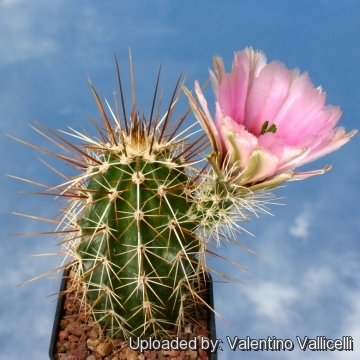 Echinocereus engelmannii var. armatus Photo by: Valentino Vallicelli
Echinocereus engelmannii var. armatus Photo by: Valentino Vallicelli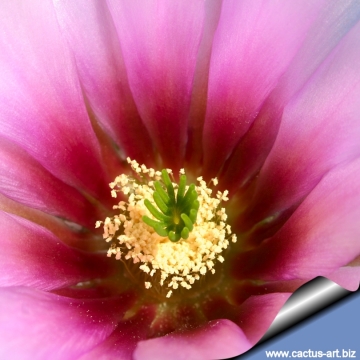 Echinocereus engelmannii var. armatus Photo by: Cactus Art
Echinocereus engelmannii var. armatus Photo by: Cactus Art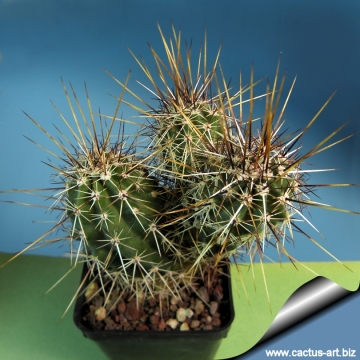 Echinocereus engelmannii var. armatus Photo by: Cactus Art
Echinocereus engelmannii var. armatus Photo by: Cactus Art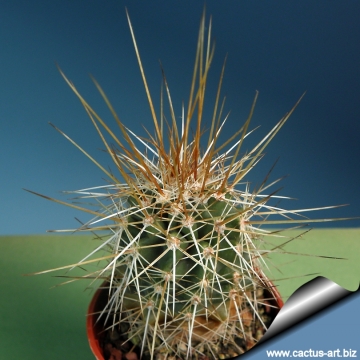 Echinocereus engelmannii var. armatus Photo by: Cactus Art
Echinocereus engelmannii var. armatus Photo by: Cactus Art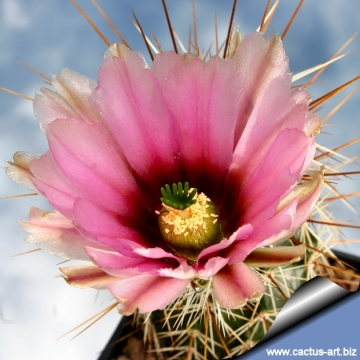 Echinocereus engelmannii var. armatus Photo by: Cactus Art
Echinocereus engelmannii var. armatus Photo by: Cactus Art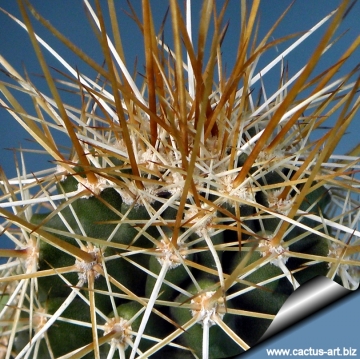 Echinocereus engelmannii var. armatus Photo by: Cactus Art
Echinocereus engelmannii var. armatus Photo by: Cactus Art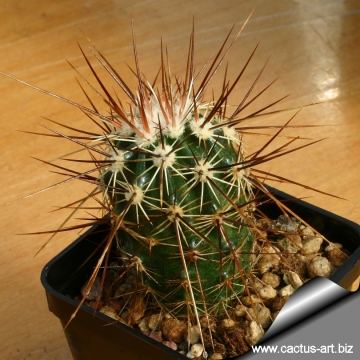 Echinocereus engelmannii var. armatus Photo by: Cactus Art
Echinocereus engelmannii var. armatus Photo by: Cactus Art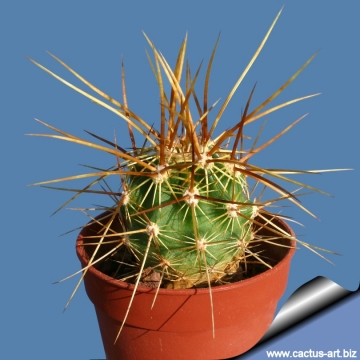 Echinocereus engelmannii var. armatus Photo by: Cactus Art
Echinocereus engelmannii var. armatus Photo by: Cactus ArtCultivation and Propagation: In cultivation the strawberry hedgehog grows rather slowly and it is sensitive to overwatering (rot prone) needs a very good drainage to avoid rotting, but requires more moisture than true desert cacti to grow and produce flowers, Keep drier and cool in winter. Need full sun. It is cold resistant to -10° ( or less depending on clones) for short periods of time. It is a fine plant for a rock garden or container, contrasts well with agaves, yuccas, and low-growing flowering plants. It will show its flowers only if we provide an adequate winter rest period.
Propagation: Seeds, also can be grown from cutting as it branches from the base.


















